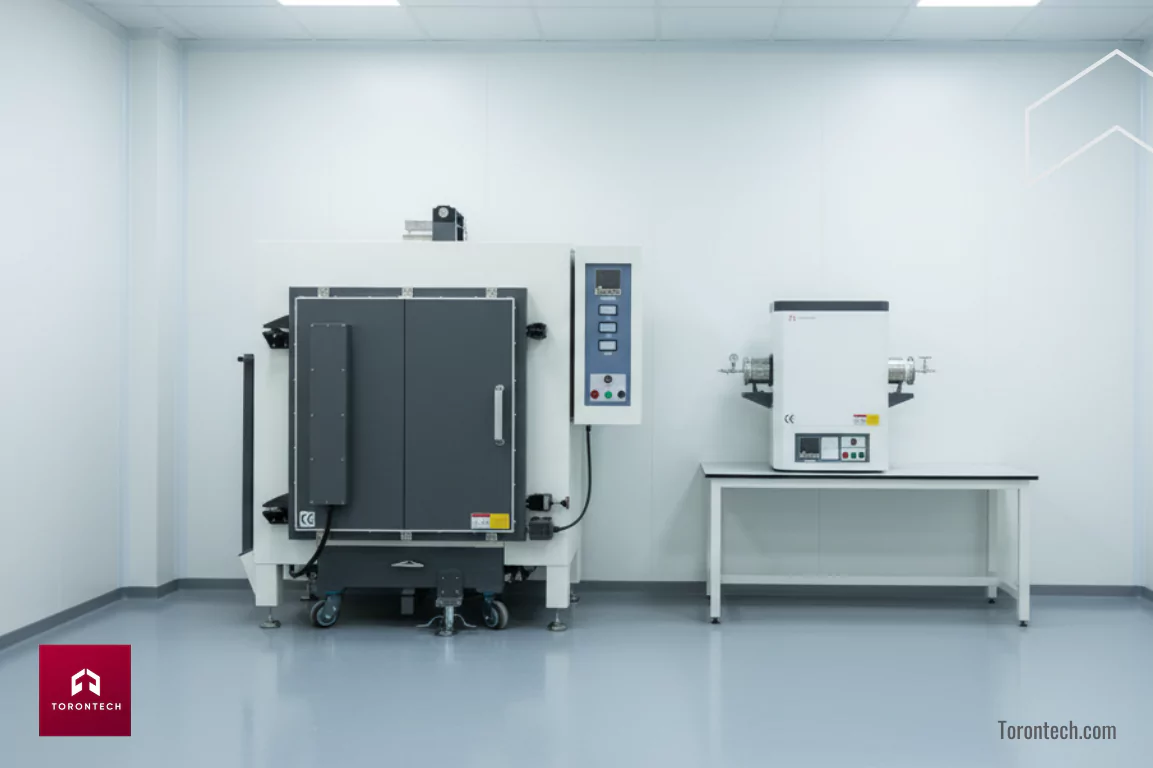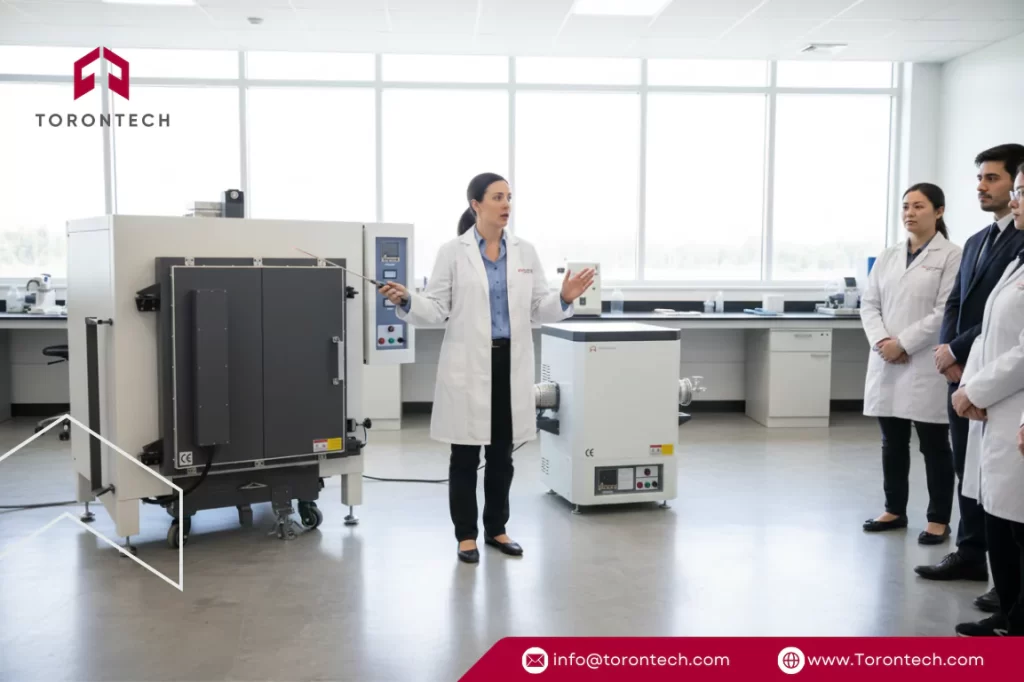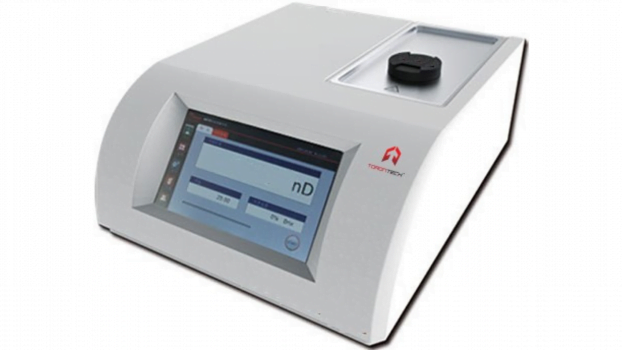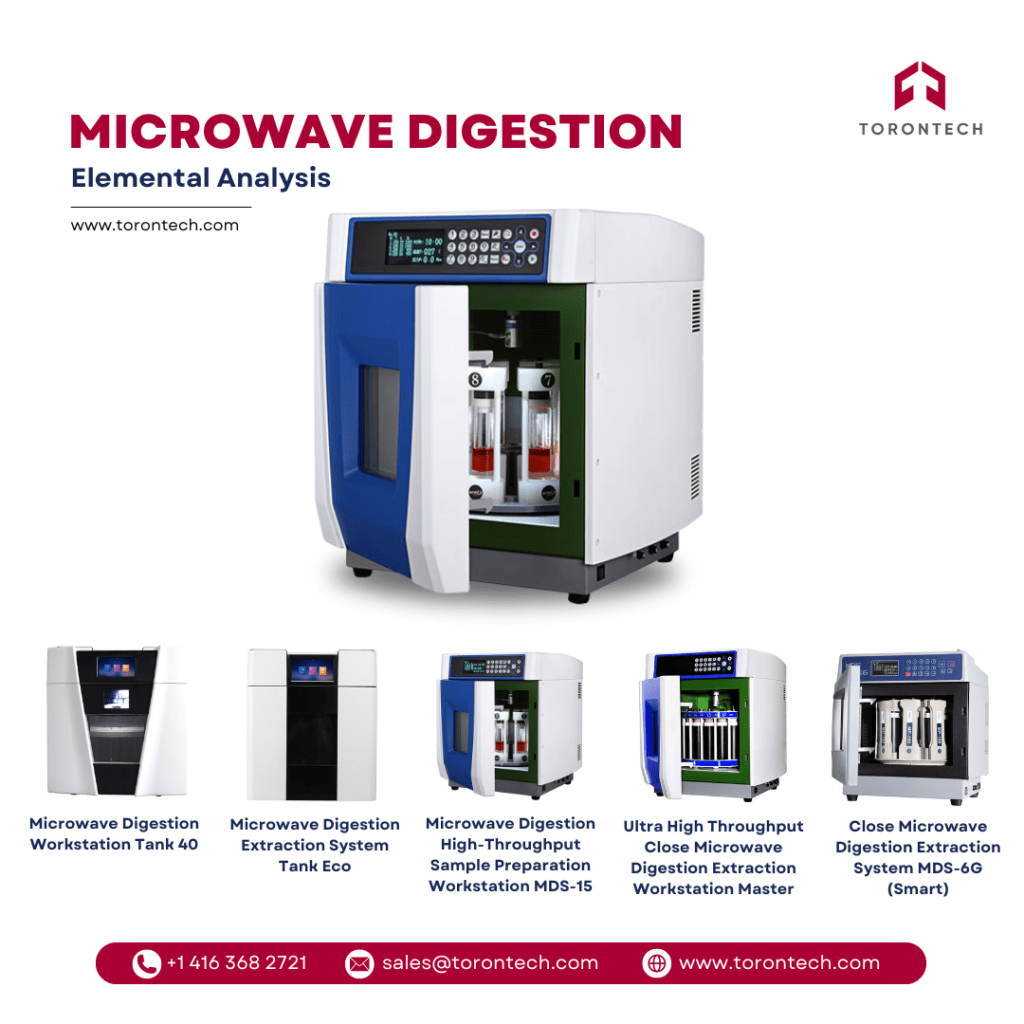Choosing new industrial equipment can be a significant challenge.
At Torontech, we’ve spent years guiding clients through this process, and we believe clarity is the most valuable tool. This piece of hardware is a major investment, and your choice will have a lasting impact on operational efficiency, product quality, and your bottom line.
With a wide field of available options, we’re here to clarify the most important distinctions for you.
Industrial Furnace vs. Lab Furnace: Two Different Tools for Different Jobs

What is the practical difference in the industrial vs lab furnace discussion? We find it’s best to think of them as two entirely different kinds of tools. The whole lab vs industrial furnace question is answered by defining the primary goal of your operation.
- Different Operational Goals: An industrial furnace is the workhorse of a production line. It’s built to handle large volumes and heavy loads, consistently, day after day. A lab furnace, by contrast, is a precision instrument where accuracy and control are the main objectives.
- Different Construction: Our Industrial Chamber Furnaces are large, rugged units designed to withstand the demands of a factory floor. In contrast, our Muffle Furnaces are more compact units, built to deliver exceptionally uniform temperatures for detailed work.
- Different Strengths: The industrial machine’s value is in its throughput and durability. The lab machine’s value is in its precision—attributes we feel are essential for generating reliable data. This focus on application-specific strength is a cornerstone of how we approach our own product designs.
Here is a straightforward comparison:
| Feature | Industrial Furnace | Laboratory Furnace |
| Primary Goal | High-volume production, built for endurance | Precision tasks and research |
| Typical Size | A larger, floor-standing unit | A smaller unit, often for benchtop use |
| Temperature | High temperature capacity (up to 1800°C) | Highly uniform and stable heat |
| Key Metric | Production rate, operational uptime | Accuracy, consistent results |
| Example Solution | Bogie Hearth Furnaces | Tube Furnaces |
How to Choose an Industrial Furnace
Here is our advice on how to choose an industrial furnace that will serve your operation well:
Look Beyond Max Temperature
We always advise clients to look closely at temperature uniformity. The final quality of a large batch often has more to do with even heating than with hitting a single peak temperature.
Consider Your Materials and Volume
Be realistic about the size and quantity of your materials. We find that planning for reasonable future growth here can prevent the need for a much larger capital expense down the road. For especially large loads, a bogie hearth furnace is almost always the most practical solution.
Atmosphere Control is Key for Some
Many processes require a specific atmosphere. If that describes your work, a vacuum atmosphere furnace from a reputable supplier like Torontech is the correct tool for the job.
Evaluate the Total Cost
The initial purchase price is just one part of the equation. A furnace that consumes excess energy is a constant drain on resources. It’s a principle that guides our own design process; we believe the total cost of ownership is a far more important metric than the initial sticker price.
Common Applications for Industrial Furnaces
If your operation requires a large-scale heating solution, you’re likely working in a demanding field like one of these:
- Automotive: Heat-treating large parts like gears and engine components to improve their strength and durability.
- Aerospace: Sintering and stress-relieving critical structural elements made from advanced alloys.
- Ceramics: Firing large batches of industrial ceramics, bricks, or sanitaryware.
How to Choose a Lab Furnace
Here is our perspective on how to choose a lab furnace for these exacting applications:
Precision and Uniformity are a Priority
In a lab, your results depend on your equipment’s ability to hold a precise and stable temperature. This is an area where we place a huge emphasis during manufacturing, as we know that our clients’ research credibility depends on the quality of their data.
Match the Chamber to Your Workload
Consider the typical size and number of your samples. An oversized chamber can be less energy-efficient and slower to heat for small, routine analyses.
Don’t Compromise on Atmosphere Control
If you work with sensitive materials, this is not the place to cut corners. A tube furnace provides the high degree of atmospheric control necessary for serious materials research.
Factor in Cycle Time
The speed at which a furnace heats and cools can directly influence lab productivity. It’s a feature we’ve seen make a tangible difference in how many tests our clients can run in a day.
Common Applications for Lab Furnaces
Selecting a furnace for a laboratory requires a different set of considerations. This precision is critical in fields such as:
- Materials Science: Testing the thermal properties and melting points of new alloys and composites.
- Dental Labs: Creating highly accurate dental crowns and bridges through a sintering process.
- Quality Control: Ashing samples to determine the inorganic content of materials for regulatory compliance.
Choose Your Next Furnace with Torontech
Ultimately, the right furnace is the one that fits the specific demands of your work. By evaluating the factors we’ve outlined, you can select a piece of equipment that will be a reliable and valuable asset to your operation for years.
For over two decades, we have provided businesses with innovative and cost-effective technology. We don’t simply ship equipment; we provide solutions that work. Every operation is unique, and our commitment is to help you find the ideal furnace from our ToronTherm series.
Our goal isn’t just to make a sale; it’s to build a long-term relationship by providing equipment that contributes to your success. If you have any questions or would like to discuss your requirements, we encourage you to contact us.
Need the Right Furnaces?
Explore cost-effective Torontech industrial and lab furnaces for reliable results.
Frequently Asked Questions (FAQ)
What's the main difference between a Muffle Furnace and a Tube Furnace?
Think of it this way: a muffle furnace heats your sample in regular air inside a chamber. It’s great for a huge variety of general-purpose lab work. A tube furnace is more specialized. It heats your sample inside a narrow tube, which allows you to tightly control the atmosphere by introducing specific gases or creating a vacuum. It's the right choice for sensitive materials that can't be exposed to air at high temperatures.
3. What is the typical lifespan of a furnace?
That's a great question, and the honest answer is that it varies based on use and care. However, a well-built furnace that is properly maintained can be a very long-term asset, often lasting well over a decade. The most critical factors are the quality of the initial build and performing regular maintenance, like checking on heating elements and thermocouples.
4. What if my process requires a specific size or feature?
Absolutely. We recognize that standard models don't fit every unique process. A good portion of our work involves collaborating with clients to provide furnaces with custom chamber dimensions, temperature capabilities, or control systems. It's a core part of how we ensure you get the right tool for the job.
5. How much of an impact does a new furnace have on energy costs?
Energy usage is a major factor in the total cost of ownership. The difference between a poorly insulated furnace and a highly efficient one can be substantial on your monthly utility bills. This is why we place such a high importance on using quality insulation and modern heating elements. An efficient furnace saves a significant amount of money over its lifetime.








